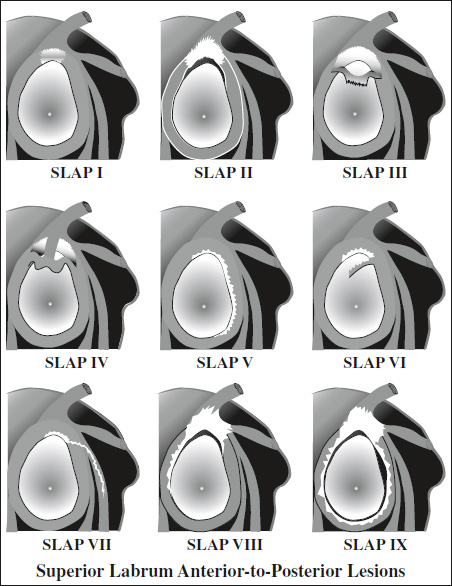Bone and Soft-Tissue Disorders
Location: anteroinferior labrum >entire anterior labrum >isolated tear of anterosuperior labrum
Subtypes of anteroinferior labral tears:
- Bankart lesion
- Anterior labroligamentous periosteal sleeve avulsion
- Perthes lesion
- absence / detachment of labrum
- frayed labrum with irregular margin
DDx:
- Middle + inferior glenohumeral ligaments closely apposed to anterior labrum
- Recess between anterior labrum + glenoid rim
- Recess between middle + inferior ligaments

= anterior-to-posterior lesion of the superior labrum centered at biceps tendon attachment
Mechanism: fall on an outstretched hand (most common), anterior shoulder dislocation, sports activity with overhead arm motion
- pain, clicking sensation
- after fall on outstretched hand (31%) patient usually presents with SLAP III, IV, V lesion
- SLAP I = fraying of free edge of superior labrum; common in elderly as a degenerative tear
- SLAP II = detachment of superior biceps-labral complex from glenoid rim
DDx: superior sublabral recess (less distance between labrum + glenoid, no irregular appearance, no lateral extension of defect) - SLAP III = bucket-handle tear of superior labrum leaving biceps tendon attached to glenoid
- SLAP IV = bucket-handle tear of superior labrum with tear extending into biceps tendon
- SLAP V = Bankart lesion dissecting upward to involve the biceps tendon
- SLAP VI = unstable radial / flap tear with separation of biceps anchor
- SLAP VII = superior labral tear extending into middle glenohumeral ligament
- SLAP VIII = SLAP II + entire posterior labral tear; anterior inferior labrum not involved
- SLAP IX = circumferential labral tear
